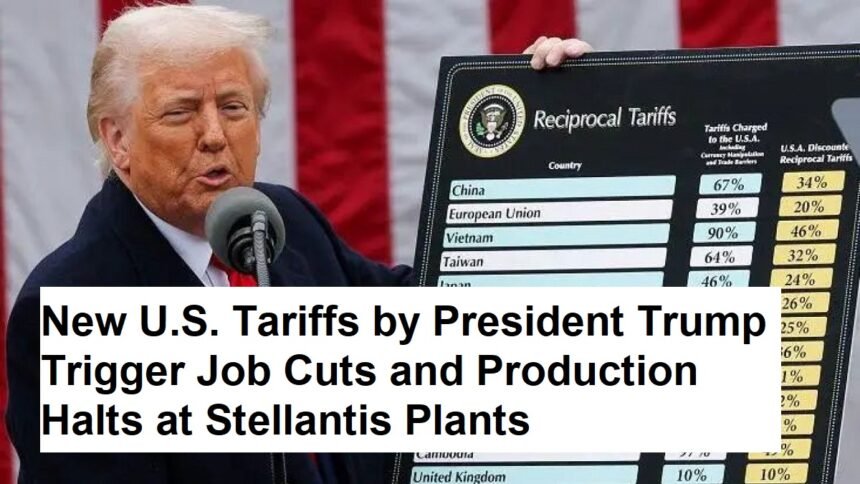In a dramatic development shaking the North American automotive industry, newly imposed import tariffs by President Donald Trump have led to temporary layoffs affecting 900 employees at Stellantis factories in the United States. The policy, part of the president’s broader strategy to counter what he deems unfair trade practices, has forced the multinational automaker to suspend production at several assembly plants in Canada and Mexico. This cascade effect has extended to supplier factories in the U.S., where hundreds of workers have been temporarily laid off.
The announcement of the tariffs sent shockwaves through the industry and raised immediate concerns over the production and supply chain logistics that bind operations across three major countries. Stellantis, a key player in the automotive market, quickly scrambled to assess the impact of the tariff-induced cost increases on its assembly lines. The company confirmed that approximately 900 workers at its U.S. facilities faced temporary layoffs as a result of the new tariff policy, citing the pressing need to reassess production volumes and operational budgets.
A company spokesperson detailed the consequences of the tariff implementation: “The new import tariffs have significantly increased operational costs. As a result, we have had to temporarily suspend production at our assembly plants in Canada and Mexico. Consequently, our suppliers in the United States are also forced to make difficult decisions, including reducing their workforce on a temporary basis.” This statement underlines the profound ripple effects of international trade policies on interconnected production networks.
Industry analysts have long warned that aggressive tariff policies can disrupt production schedules, disrupt supply chains, and lead to unintended consequences such as layoffs and production stoppages. “The automobile industry is highly integrated across borders,” noted an economic expert specializing in trade disputes. “When tariffs are imposed, it not only affects the final product pricing but also the entire chain of production, from the suppliers to assembly plants. In this case, Stellantis is experiencing direct repercussions as trade costs surge, forcing them to cut back on labor and production temporarily.”
The strategic decision to pause production in assembly plants located in Canada and Mexico represents a preemptive measure by Stellantis to minimize financial losses and mitigate the risk of overproduction in a climate of rising costs. As the company adjusts its output to respond to the heightened economic pressures, concerns are mounting among workers and their unions. Labor representatives have called on both government and corporate leadership to consider the full scope of the tariff’s implications, emphasizing the need to protect the livelihoods of workers caught in the crossfire of trade wars.
In response to the job losses, several union leaders have initiated discussions with company management and government officials, aiming to secure assurances about the duration of the layoffs and the long-term stability of employment within the automotive sector. They emphasize that while temporary production halts might be a necessary short-term measure, sustained disruptions could have a cascading negative effect on the economy and local communities dependent on these manufacturing jobs.
The new tariffs, part of President Trump’s wider policy to re-balance trade relations, target a range of imported goods and have thus affected key sectors of the U.S. economy. For the automotive industry, which relies heavily on cross-border logistics and a just-in-time supply chain model, this marks yet another challenge. Companies like Stellantis are now navigating a complex trade landscape that combines geopolitical tension with economic uncertainty.
Government officials have acknowledged the distressing scenario faced by affected workers and are reportedly in talks with industry leaders to explore ways to cushion the impact of these tariffs. Efforts are underway to consider temporary relief measures, such as tax incentives or subsidies, aimed at stabilizing employment and smoothing the transition during this period of disruption.
As the situation unfolds, the ramifications of President Trump’s tariff policy continue to reverberate throughout the North American manufacturing sector, forcing companies like Stellantis to recalibrate their operational strategies while grappling with significant human impacts. The coming weeks will be critical as industry stakeholders, government officials, and labor representatives work together to address these challenges, striving to restore stability in a time marked by heightened economic and geopolitical friction.












